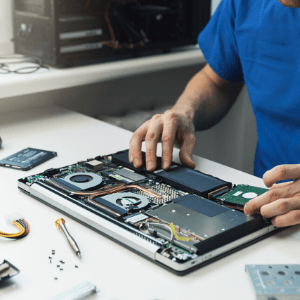When it comes to legal matters, especially in the context of modern digital evidence, the concept of a forensic image plays a pivotal role. The term "forensic image" refers to a bit-by-bit copy of the entire contents of a storage device, such as a computer's hard drive, a USB drive, or even a smartphone. This comprehensive duplication not only captures the files and folders within the device but also the unallocated space and deleted files, making it an invaluable tool in legal proceedings.
What Exactly is a Forensic Image?
In essence, a forensic image is a mirror image of a storage device that enables experts to examine and analyze the data within without altering the original content. This process is crucial in the realm of digital forensics, as it allows for the preservation of evidence in its original state, ensuring its integrity and admissibility in court.
The Role of Forensic Imaging in Legal Cases
In legal cases, particularly those involving digital evidence, the accuracy and integrity of information are paramount. A forensic image serves as a safeguard, ensuring that the data obtained is authentic and unaltered, providing a clear picture of the information stored on the device at the time of the investigation. This level of meticulous documentation helps establish a solid foundation for legal arguments and can significantly impact the outcome of a case.
How Forensic Images Aid in Uncovering Evidence
One of the key benefits of forensic imaging lies in its ability to uncover crucial evidence that might otherwise go unnoticed. By capturing deleted files and hidden data, forensic experts can unearth valuable information that could potentially make or break a case. Whether it's uncovering incriminating documents, revealing digital footprints, or identifying potential cyber threats, the detailed examination made possible by forensic images can provide vital insights for legal proceedings.
The Process of Creating a Forensic Image
Creating a forensic image involves a meticulous and standardized procedure to ensure the integrity of the evidence. The process typically begins with the identification of the target device, followed by the use of specialized software to create a sector-by-sector copy. This copy is then stored separately to prevent any alterations or contamination, maintaining the original data's pristine state for examination and analysis.

Ensuring Admissibility in Court
Admissibility of evidence is a critical factor in legal proceedings. Forensic images, when created and handled correctly, adhere to strict protocols and industry standards, enhancing their admissibility in court. Their detailed and comprehensive nature provides a solid foundation for legal arguments, giving judges and juries a clear and unbiased view of the digital evidence, thus strengthening the overall case presented.
Challenges and Considerations in Forensic Imaging
While forensic imaging is a valuable tool, it is not without its challenges. Issues such as hardware compatibility, data encryption, and the constantly evolving nature of technology can pose hurdles during the imaging process. Therefore, it is essential for forensic experts to stay updated with the latest advancements and adhere to industry best practices to ensure the accuracy and reliability of the evidence collected.
The Future of Forensic Imaging
As technology continues to advance, the field of forensic image is expected to evolve accordingly. With the rise of cloud computing, IoT devices, and blockchain technology, the complexity of digital evidence is bound to increase. This calls for continuous innovation in forensic techniques and tools, emphasizing the need for adaptable and robust forensic imaging practices to meet the challenges of the digital age.
In conclusion, the use of forensic imaging in legal proceedings is instrumental in preserving the integrity of digital evidence. By providing an unaltered replica of storage devices, forensic images serve as a reliable source of information that can significantly impact the outcome of legal cases. As technology progresses, the importance of maintaining rigorous standards in forensic imaging becomes even more crucial, ensuring the continued validity and admissibility of digital evidence in the courtroom.


No comments yet